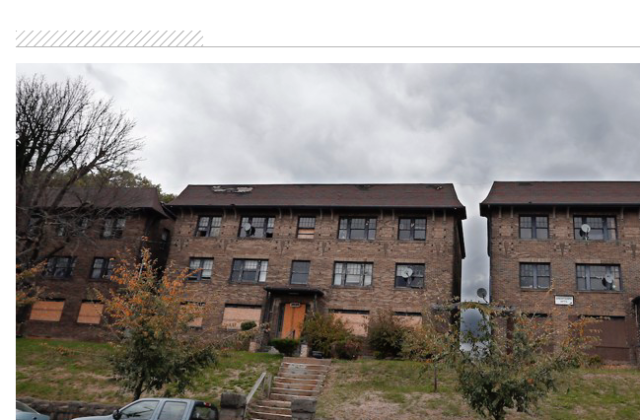Richard Florida: Another Reason Why More Supply Won’t Solve High Prices
It’s simple. Like I said, so simple even a philosophy major and the Seattle Times understand it: when there is scarcity of something, it’s price goes up. Conversely, if that thing becomes less scare, prices go down. But the lengths to which opponents of increasing housing supply go to find other reasons to not allow more housing production never ceases to amaze me. I haven’t really wrapped my mind around the theory offered by researchers cited by Richard Florida in a recent post, but it is yet another attempt to show that what accounts for housing problems isn’t that housing is scarce but that greedy landlords are exploited the poor. Behold the new measure of Housing Exploitation:
They define housing exploitation as the amount of rent paid relative to the market value of that housing, and measure this exploitation as the ratio of annual rents from rental housing units over their combined property value. The level of exploitation rises as the ratio of rent to property value grows. (The study methodology accounts for the costs of upkeep and maintenance.) Desmond and Wilmers make use of two key sources of data: a large-scale national survey of rental properties, and a detailed set of surveys of renters and rental properties in Milwaukee.
So,
In high-poverty neighborhoods, those where 50 to 60 percent of residents live in poverty, the exploitation rate is 25 percent, meaning that 25 percent of the value of the property is paid back in a single year of rent.
The argument here seems to be that somehow it would be less exploitative or more just if cheap land had cheaper rents, at least as a ratio of rents over a period of time to the value of the land. OK. But why? Well, the assumption is that if I buy cheap land and charge rent that as a ratio to that land exceeds, well, 25 percent I am “exploiting” the renter. I make more “profit” because of this.
Nationally, landlords in poor neighborhoods derive a median profit of $298 monthly, compared with $225 in middle-class neighborhoods and $250 in affluent ones. In Milwaukee, the profit differential is even greater, with landlords in poor neighborhoods raking in $319 per month, more than double the profit ($174 per month) of landlords with properties in non-poor neighborhoods.
What?
The Housing Exploitation measure (my name for it) seems to be using the principle of capitalization rate which investors use to determine the potential return on a rental property. I emphasize potential because it’s a guess, and based more on rents and operating costs than the value of the land which can surge but doesn’t help offset changes in market rents or operating costs. Here’s a big slice of an Investopedia article on Capitalization Rate.
Examples of Capitalization Rate
Assume that an investor has $1 million and he is considering investing in one of the two available investment options – one, he can invest in government issued treasury bonds that offer a nominal 3 percent annual interest and are considered the safest investments and two, he can purchase a commercial building that has multiple tenants who are expected to pay regular rent.
In the second case, assume that the total rent received per year is $90,000 and the investor needs to pay a total of $20,000 towards various maintenance costs and property taxes. It leaves the net income from the property investment at $70,000. Assume that during the first year, the property value remains steady at the original buy price of $1 million.
The capitalization rate will be computed as (Net Operating Income/Property Value) = $70,000/$1 million = 7%.
This return of 7 percent generated from the property investment fares better than the standard return of 3 percent available from the risk-free treasury bonds. The extra 4 percent represents the return for the risk taken by the investor by investing in the property market as against investing in the safest treasury bonds which come with zero risk.
Hmmm. Is that 7 percent the same as the rate of Housing Exploitation? I don’t think it’s the same thing at all. What an investor is doing is using the land value and Net Operating Income (NOI) to calculate relative risk. Land value and rents definitely have a relationship and the profitability of a purchase of an existing building certainly is based on the relationship between the value of the land and the ability to generate rent. But rents are not set by landlords or captive to land value; it’s the other way around. Land gets valuable because of its rent potential, and that potential rises dramatically when demand for housing is high and available units are scarce.
So areas where the land value is low and rents are being set by the market, one could argue that the tenant is paying too much rent in relationship to the land. But why would you? If someone is paying $900 for a one bedroom apartment on a piece of land valued at $1,000,000 and someone else is paying $1,500 for an apartment on land valued at $5,000,000 so what? If the point is that we want the person who is paying $900 to see their rent drop, the best way to achieve that is allowing lots more housing in that neighborhood, especially if land is cheap. A capitalization rate can be low even when land value is high especially if rents stabilize.
What’s a good way to make things worse? How about taxing new housing in lower rent neighborhoods the way Councilmember Herbold has proposed. Suppressing new housing supply in places where land is cheaper by boosting it’s price won’t lower rents — it will push them higher because demand for those units will increase. This is just my first take at this and there may be something I am missing. I am gong to reach out to people who know a lot more about this and get more. But it seems to me that trying to measure exploitation is a waste of time; why not build more housing instead?
Email me with any thoughts on this: roger@seattleforgrowth.org



